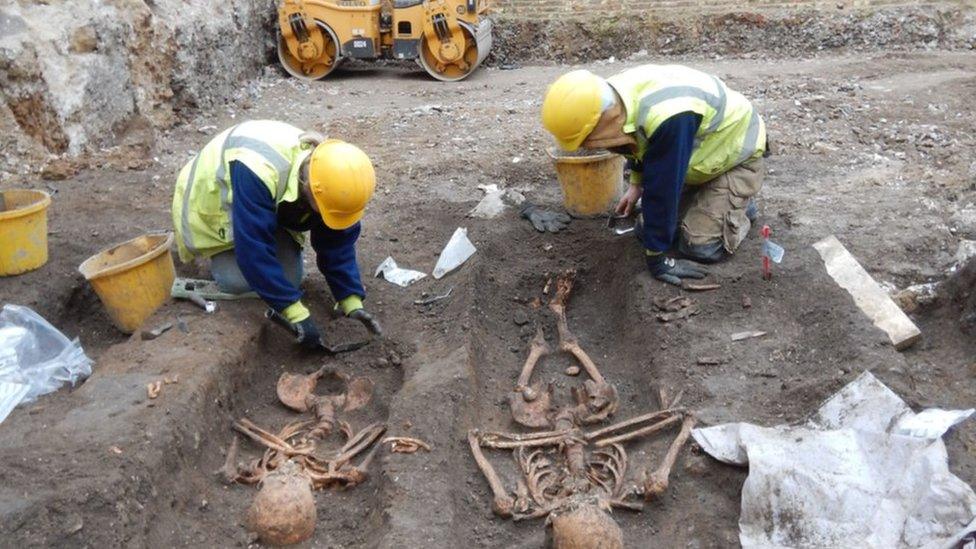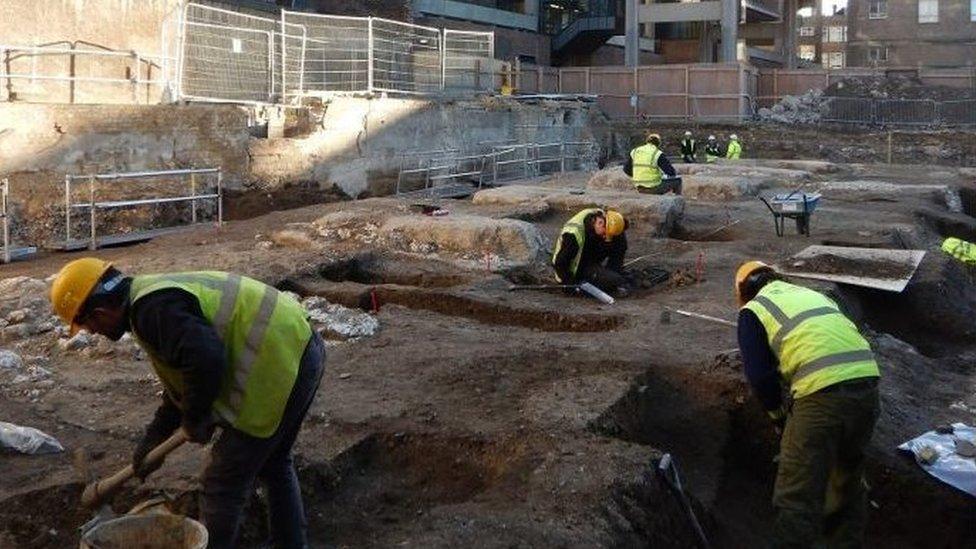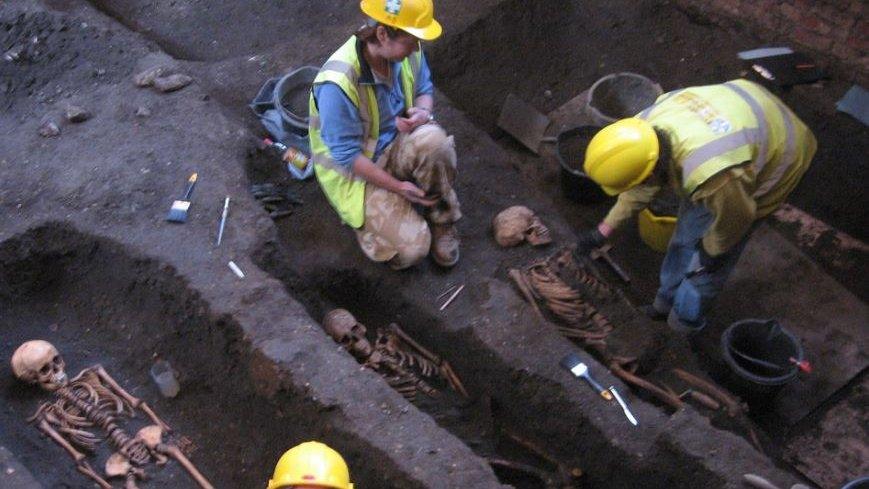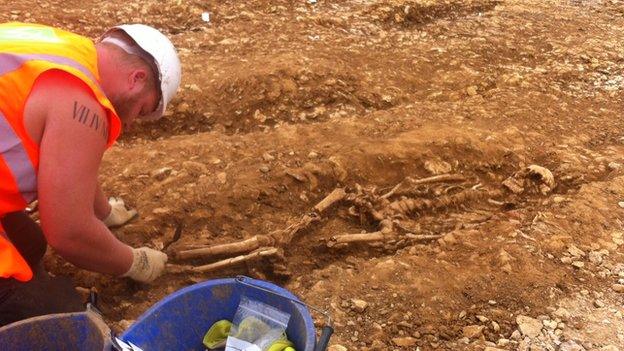Archaeologists find 25 skeletons in medieval Cambridge friary
- Published

The team from the Cambridge Archaeological Unit have unearthed 25 skeletons so far
More than 25 skeletons have been unearthed by archaeologists investigating the site of a medieval friary in the centre of Cambridge.
Archaeologists say the skeletons are in good condition and they expect to find as many as 40 in the coming weeks.
The land was home to a friary between 1290 and 1538, making many of the remains 450 years old.
The discovery was made in the university's New Museums site, which is about to undergo a major redevelopment.
'Potential for surprises'
It is currently home to the many of the university's science departments and examination halls as well as the David Attenborough building and the Museum of Zoology.
The team from the Cambridge Archaeological Unit (CAU) will spend the next four weeks on the site before renovations get underway.
Site director Craig Cessford said building work through the centuries has left a number of skeletons "chopped through".

Archaeologists estimate there could be as many as 40 skeletons on the site
He said: "The bones are really perfectly preserved apart from where early 20th Century foundations have chopped through them so in places you'll only get half a body.
"Even when the friary was in use they sometimes chopped through the burials - so it's not just in the modern period that the skeletons have been disturbed."
The Augustinian friary was founded in 1290 but fell victim to the dissolution of the monasteries in 1538 under Henry VIII.
"They come in, they set up their friary and mark off an area as a cemetery and they start burying people in nice neat rows," Mr Cessford said.
"Eventually, after 100 or 150 years they fill up their area and they just start back at the beginning again and we know they did that at least three times.
"It still has the potential for surprises."
Comparative collection
The skeletons will now be processed, washed and studied by specialist osteo-archaeologists.
The CAU is working closely with the university's Department of Archaeology on a project called After the Plague, based around the discovery of around 400 skeletons in a burial site at Cambridge's Hospital of St John in 2010.
It's hoped the friary remains will become a "comparative collection", Mr Cessford added.
- Published30 May 2016

- Published4 September 2014
